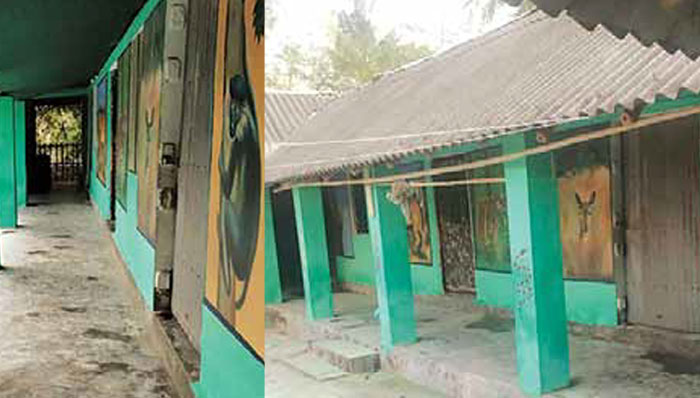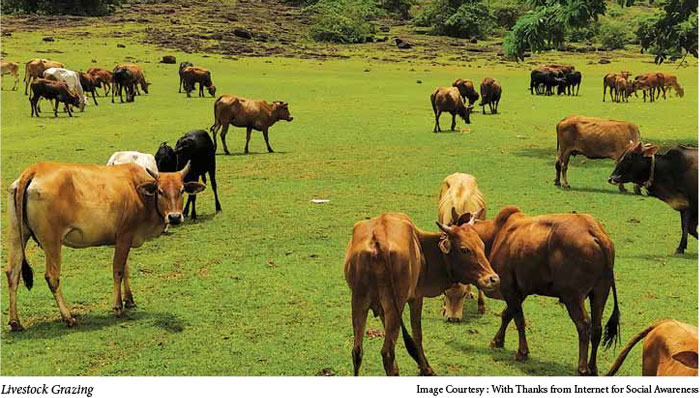
A School with a Difference
By Anupa Roy
Sundarbans is a very unique heritage destination situated in West Bengal. It’s a one of a kind environment of mangroves and is filled with an abundance of wildlife. A land of beauty and contrasts.
Consisting of mainly agriculture and fishing as its primary sources of income, the people here are simple and hard working. It’s a rural area with very remote and far flung villages set among some of the most inhospitable habitats.
Saving Tiger Society, a Kolkata based NGO is focused on the conservation and protection of wildlife. The NGO also runs several community development projects. Sundarbans has a large and varied population of wildlife, with the Royal Bengal Tiger being the star among them. It is an extremely sensitive and dangerous area due to the topography and the proximity of the jungles. Man animal conflict is a primary concern and one of our long term, ongoing projects is to spread awareness and educate people on living in harmony in their respective surroundings.
Among the community projects is also a primary school, Nafargunj Sunrise Nature Model School.
This is a primary school in the heart of Sundarbans, in a small village called Nafargunj.
It’s a very pretty place, a charming village surrounded with agricultural fields, canals and rivers. As mentioned earlier, its remote, far away from most amenities like schools and hospitals. Primary education is not a priority here as most people would rather work in the fields and go fishing than spend time taking their little ones to school and getting them back.
Recognizing the need for education for the young children, Saving Tiger Society introduced this school around 6 years ago.
The school’s primary aim is to give an all-round development to the children. Aside from the academic curriculum, focus is also given to environmental issues like Nature education, importance of clean and healthy living, co habitation, plastic free living, water saving techniques. As mentioned earlier, these villages lie in very sensitive areas, where encounters with wildlife are a factor. The need for basic survival and to earn a livelihood forces the people to venture into jungles and go out fishing which takes them right into tiger territory. The children living here are no strangers to accidents and loss of life. Danger is always present and they have to learn to live and survive within this environment. The aim of the school is to start teaching them and making them aware of these facts and not just prepare them but also give them solutions, show and teach them alternate, safer ways of living in conjunction with their environment. Guiding the children towards ideas that will give them a livelihood away from the forests and its dangers.
Education is a very important tool and if used effectively has permanent and lifelong benefits within the children. This is what the school believes and imparts. The belief is that if they can understand and learn from this age, it will become a habit and a part of their life growing up. They will then be carrying it forward to others in future.
Sundarbans has always had a shadowed history with tales of destruction and despair. Some unique traditions and folk lore have emerged through the years and people even today believe and practice them. These traditions are rooted deep within the people. Changing habits and generations of a way of life is not easy and it does not happen overnight.
Children are more open, they are yet to become entrenched in the ways of their families. The time to mould them is now, when they are fresh and can be shown the benefits of different perspectives. In the future, this will also open up new avenues of livlihood and broaden their horizons.

This is a primary school and the children, the students are very young. Our classes begin from Nursery onwards. Due to the age, we like to make their school time as interesting as we can. Academic knowledge is important and plays the vital role. Which is why when we teach them about Nature, the environment and their surroundings, more sustainables way of living, it’s done through activities. Things that will allow them to take part, experience it for themselves. It has to be designed keeping in mind their age and their capabilities. What will keep them engaged and interested so that they will use these practices as they grow and learn. Most of our Nature education hence is practical, activities that take place outside. We have tree plantation as a regular activity, where saplings are given to the children to plant along the roads and also they take saplings home to plant in their surroundings. We ask them to keep a progress report of the plants they have planted, encourage them to look after it themselves.
At times we like them to do a play or a skit based on the relevant topic, we have drawing competitions with Nature as a theme, children are naturally extremely creative and some of their interpretations are very innovative.
 Movies on environment and Nature are shown to them, we also show documentaries of the animals that are part of their lives. Visual aids used are much more effective in learning at this young age. The topics shown are such that will encourage them to think and also understand that new skills and new ways of life are not bad nor are they detrimental and can be beneficial for them and their community. When one lives in amongst Nature and most of the daily chores and their work revolve around the day, the season, the time and the weather, even the children develop a natural affinity to the ways of Nature. They are intuitively connected, so teaching them about a subject they are already attuned to, is relatively easy. They simply need to be shown the more effective, less aggressive way of living without compromising lives and without destruction. Once a year, some events and trips are included like an educational trip for the students, where we take them outside their village and give them a different experience. There are still people living in Sundarbans who have never stepped outside their villages.
Movies on environment and Nature are shown to them, we also show documentaries of the animals that are part of their lives. Visual aids used are much more effective in learning at this young age. The topics shown are such that will encourage them to think and also understand that new skills and new ways of life are not bad nor are they detrimental and can be beneficial for them and their community. When one lives in amongst Nature and most of the daily chores and their work revolve around the day, the season, the time and the weather, even the children develop a natural affinity to the ways of Nature. They are intuitively connected, so teaching them about a subject they are already attuned to, is relatively easy. They simply need to be shown the more effective, less aggressive way of living without compromising lives and without destruction. Once a year, some events and trips are included like an educational trip for the students, where we take them outside their village and give them a different experience. There are still people living in Sundarbans who have never stepped outside their villages.
In the school, there are health checkup camps organised for the students, books and study material are distributed to needy children. One of the most important reasons why the school is successful is the facility of pick up and drop the students are provided. The school has its own vans for this purpose.
Nafargunj Sunrise Nature Model School is a small school with a team of teachers who are doing great work in imparting education to these children. Specially now, during this pandemic when city schools have had the facility to conduct online classes. Remote villages do not have the luxury of such amenities. Majority of the people there don’t have smart phones, as such to handle and conduct socially distanced classes was a big dilemma. The teachers, very effectively and with ingenuity and creativity have found ways to resolve this issue. Along with the help of guardians, students are able to follow their syllabus and do their lessons. Its a great feat truly commendable.
The school is a matter of pride and joy to everyone involved in it. It is making a difference, we see that through this children as they move up in each class and grow in age. Its our endeavour to grow this school so that more children can avail education and learn to live a life which will help them for their future.




